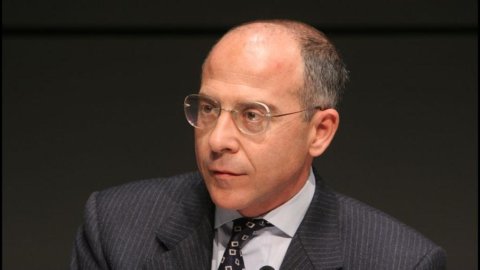Certainly the constraint of debt reduction will remain. Just as the signal has already arrived of an accentuated priority on divestments. But among the innovations that Francesco Starace will bring to Enel there is much more. In fact, there is talk of a new organizational chart of the group on which he is already working; of a slimming cure in Eastern Europe and, most likely, of a reorganization of activities in Latin America. There are still a few days left until July 31st when the new managing director who arrived on May 22nd will present himself to the market for the first time, in his new guise, with the half-yearly data. Many await the signal of a change and the markets will judge the first moves of the new CEO precisely from the indications on the new route to follow. The belief that we are on the verge of a
Debt and disposals. Financial debt rose further in the first quarter to 41,5 billion from 39,7 at the end of 2013. An increase also linked to the accounting effect of receivables not collected in the first few months of the year and in any case much lower than the 50,9 billion at the end of 2009 when the acquisition of Endesa was still to be digested. But still a significant weight on the accounts. An acceleration of the disposal plan which so far has allowed only 400 million to be collected out of the 4,4 billion to be reached by the end of the year, is therefore one of the objectives of the new CEO. So much so that Starace has already indicated an initial change of course by including Slovenske Elektrarne (Se), the Slovak electricity company that Fulvio Conti had kept out of the scope of salable assets, in the list of salable companies. The group has confirmed that it has entrusted Bnp Paribas and Deutsche Bank with the mandate for the sale and the estimates of the investment banks range between 2,3 and almost 3 billion for the 66% share capital held by Enel. However, it is necessary to subtract 550 million of debts from this figure that Se has in its belly, but which would still allow it to approach the programmed sales target in big steps. The rumors of the last few weeks accredited an interest by the Chinese in China National Nuclear Corporation up to the advances of the Czech Cez and the Russian Rosatom (which could appear together). Just as it seems that moves are also being made for the sale of nuclear assets in Spain and Romania.
The new strategy. With the debt target set at 37 billion for now, the space to confirm the expected profit levels is confined to disposals. While Crédit Suisse sees the 2014-18 objectives in danger, other investment banks are less pessimistic but all dominated by prudence given the still weak scenario both inside and outside Italy. The electricity generation sector remains weak due to the drop in consumption and thermoelectric is increasingly suffering from competition from renewable sources. According to forecasts, megawatt-hour prices remain low in Central Europe (35-38 euros, also based on 2015 estimates) and should also fall in Italy (around 60 euros). To all this must be added the variable represented by regulatory uncertainty, after the government decree that reduces incentives for photovoltaics with retroactive effect. It is true that Enel is by now an intercontinental group, operating in 40 countries and 4 continents, all in all little exposure to photovoltaics in Italy where Enel Green Power owns about 80 Megawatts (out of 8.900 of total green energy installed in the world). And yet Starace has clearly clarified that retroactivity
Reorganization and Latam. The horizon is that of 2015, but some moves could begin to be seen this year as well. In pole position would be the reorganization of the group by operating countries compared to the current configuration by divisions. With the lightening of the presence in Eastern Europe, Enel would play its best cards on the reorganization of the activities in Latin America which would be spun off from Endesa and transferred to the holding company. Enersis, the utility which through its main subsidiaries and affiliates is already active in Chile, Argentina, Brazil, Colombia and Peru would thus pass under the direct control of Enel and could further shorten the chain of control with the purchase of minorities from its subsidiaries consolidating them. Endesa, at that point, would concentrate in Spain and could open its capital to new private shareholders, allowing Enel to recover resources and enhance its investment capacity in the most interesting markets. The analysts of UBS reasoned on this scenario, not so far from the programs under discussion at the top levels of Enel, who hypothesize a cash injection of around 3,4 billion from the increase in the free float of Endesa (+17%). And an increase in Capex of approximately 9 billion by 2019 to be allocated to regulated and renewable activities in emerging markets and in the United States.





